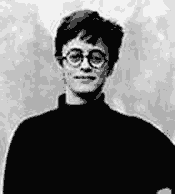|
The CIA & the Cultural Cold War by Francis Stonor Saunders 
Author photo by CAROLINE FORBES
In America, the CIA picked up former Communists, many of whom had become
disillusioned by the 1939 Molotov-Ribbentrop pact, or the Stalin show trials.
The CIA sponsored the "Non Communist Left" (NCL), socialists and Trotskyists,
as a counter weight to the Stalinists. A large Cominform event, 25th March
1949, at the Waldorf Astoria in New York, was disrupted. Fake press releases,
protests outside, and the staged humiliation of Shostakovich were all part
of the dirty tricks employed.
An important early event in Europe was the 1949 publication of The God That
Failed, with essays by former Communists; including Arthur Koestler, Andre
Gide, Stephen Spender. Richard Wright, one of the least hardline anti-Communist
authors in the God That Failed group, later died in mysterious circumstances.
Using slush fund money, derived from Marshall Aid, the CIA sponsored many
more projects as well as organizing trade union thug gangs in France (Force
Ouvrier)
With the Korean War (1950) things moved up a notch. Some cultural projects
overlapped with Radio Free Europe. More magazines included Preuves, France,
Tempo Presente, Italy, Quadrant, Australia, Hiwar, an Arabic magazine, as
well as Forum World Features, a CIA run news service. In the USA, the CIA
gave money and support to the Partisan Review, house mag of the NCL, and
another called New Leader. A European unification campaign run by Dennis
de Rougemont was bankrolled, also a Euro-federalist Youth Movement. Links
were established with IRD, a British MI6 run front. The CIA financed "Abstract
Expressionism" art exhibitions, and Boston Symphony Orchestra European concert
tours. Fake charitable trusts were set up to launder money. These are called
"pass throughs". The main trust was called the "Farfield Foundation" and
was supposedly run by a US millionaire called Julius "Junky" Fleischmann.
Some genuine trusts were used too - the Ford Foundation, Rockefeller, and
the Kaplan Foundation. Among the publishers used were Groset & Dunlap, Bantam
Books, Harper, much of this working through old school / college or former
OSS (=WW2 equivalent of the CIA) contacts of the CIA leaders. The "Chekov
Publishing House" published dissident Russian authors. Propaganda, T S Eliot
and bibles were also floated over Russia in helium balloons.
Meanwhile, the Rosenberg execution and the McCarthy witch hunts undermined
the credibility of any claims the US made about free speech in the wider
world. 30,000 book titles were purged from US Information Agency libraries
abroad. Sartre was banned, Thomas Mann (who had also had books burned by
the Nazis) Thomas Paine, John Read, H D Thoreau, Dashiel Hammet, William
Carlos Williams. Anti-Communist films were sponsored in Hollywood, especially
featuring John Wayne. Others less known were "I was a Communist for the
FBI", "Invasion of the Body Snatchers", "Red Planet Mars"; but these did
not play well in Europe. Better were the cartoon version of George Orwell's
"Animal Farm" by Halas and Batchelor, and a film version of "1984".
In 1956, with the Russian invasion of Hungary, part of the network began
to unravel. Lasky placed refugee academics in western universities. One
of the CIA organizers, Wisner drank and went into decline. $70,000 was found
for the Budapest Orchestra defectors. Radio Free Europe is thought to have
encouraged the Hungarian uprising, promising arms, but afterwards tapes
/ transcripts of the broadcasts were conveniently "lost".
Various conferences and campaigns followed. There was a row over censorship
of an article critical of the US by somebody called Dwight McDonald, in
Encounter, which got the magazine described as "a dollar megaphone for the
CIA" Another article on China by Emily Hahn was also vetoed. In 1964, there
was a co-ordinated campaign against Pablo Neruda getting the Nobel Prize
for literature. (In a stroke of poetic justice, Sartre got it instead which
likewise upset them) Through looking at Form 990-A tax accounts, a US Senator,
Portman, identified eight fake charities, including Hoblitzelle, Borden
Trust, Beacon Fund, Kaplan, who were being used to launder funds. In 1962,
Encounter was lampooned as a US Cold War cultural front in the well known
UK TV show "That Was The Week That Was" (=TW3) Their CIA Arabic magazine
was denounced as "A Trojan Horse" and one of their fronts' Paris office
was bombed.
As a result of the attention of people like Senator Portman, reports began
appearing in the New York Times. Encounter maliciously slandered one of
the whistleblowers, Irish journalist, Conor Cruise O'Brien. The whole policy
began to turn into a "Literary Bay of Pigs" when Ramparts US magazine investigated.
The CIA / FBI issued threats, blackmail, and smears but Ramparts persisted,
and in April 1967, published details of the operation, effectively blowing
it. On orders from CIA High Command, Tom Braden, an agent, wrote an article
in the US Saturday Evening Post, pulling the rug from underneath it all.
Stephen Spender resigned from Encounter. Josselson collapsed (weak heart),
In Japan, a CFCF representative's house was bombed. Other members resigned,
in a massive public row.
The book gives an insight into how the CIA operates in the cultural sphere.
It is clear that though the targets and channels used will have changed,
the basic methods will remain the same.
|
|||
|
BLUE is looking for short fiction, extracts of novels, poetry, lyrics,
polemics, opinions, eyewitness accounts, news, features, information and arts
in any form relating to eco cultural- social- spiritual issues, events and
activites (creative and political). Send to Newsdesk. |

![WHO PAID THE PIPER?:
The CIA and the Cultural Cold War
by Francis Stonor Saunders
Granta Books, London 1999
Softcover edition [2000] ISBN: 1862073279](http://www.bluegreenearth.com/site/images/books/saunders1.jpg)
![As 'The Cultural Cold War: The CIA and the World of Arts and Letters'
by Francis Stonor Saunders
New Press, US
Softcover edition [2001] ISBN: 1565846648](http://www.bluegreenearth.com/site/images/books/saunders2.jpg)
 Green Anarchist:
Green Anarchist:
